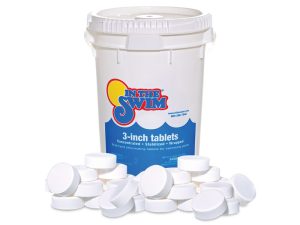Understanding the Role of Chlorine in Pool Maintenance
Chlorine plays a pivotal role in maintaining pool water hygiene. Its primary function involves killing bacteria and algae, ensuring the water remains safe for swimmers. However, its interaction with water goes beyond just sanitization. Chlorine's impact on the pH levels of pool water is a nuanced aspect of pool chemistry that requires careful management.
The Chemistry Behind Chlorine and pH Levels
Chlorine's addition to pool water introduces a complex chemical reaction. This reaction, while essential for disinfection, influences the water's pH levels. The pH scale, which ranges from 0 to 14, measures how acidic or basic (alkaline) water is. The ideal pH for pool water is between 7.2 and 7.8, ensuring optimal chlorine effectiveness and swimmer comfort.
Types of Chlorine Additives
- Trichlor: A slow-dissolving, stabilized chlorine source with a low pH.
- Dichlor: Another stabilized form, but with a neutral pH, often used for shock treatments.
- Calcium Hypochlorite: A high pH chlorine source, requiring additional acid to balance the water.
Each type of chlorine additive affects the pool's pH in different ways, necessitating adjustments to maintain the ideal range.

Does Chlorine Increase or Decrease pH?
The effect of chlorine on pH levels depends on the form of chlorine used. Some forms, like calcium hypochlorite, can increase pH levels, requiring pool owners to add acid to lower the pH back to the ideal range. Others, such as trichlor, may decrease the water's pH, sometimes necessitating the addition of a base to increase it.
Balancing Act: Adjusting pH Levels
The importance of regular testing cannot be overstated. Pool owners should test the water's pH and chlorine levels frequently to ensure they remain within the ideal range. Adjustments should be timely and precise, using the appropriate chemicals to raise or lower the pH as needed.
The Consequences of Imbalance
Improper pH levels can diminish the effectiveness of chlorine, compromise swimmer comfort, and even cause physical damage to the pool. High pH levels can lead to cloudy water and scaling, while low pH levels can corrode pool fixtures and irritate swimmers' skin and eyes.
Conclusion
The delicate balance between chlorine and pH levels in pool water underscores the complexity of pool maintenance. Understanding the types of chlorine and their effects on pH levels is crucial for keeping pool water clean, clear, and safe for everyone. Regular testing and adjustments ensure that this balance is maintained, protecting both the health of swimmers and the integrity of the pool itself.